Knowing what to do in the mania that is Manila can be, well, a little daunting. It’s a wild, chaotic, intimidating and loveable city, all rolled into one, and requires as much foresight, planning and preparation as possible to get the very most out of it.
This true Asian mega city is a thriving metropolis, and for newbies can be an impenetrable juggernaut of a city. We’re here to help you cut through the chaos and swagger through the city like a resident, with these; our 9 of the best things to do in Manila.
Explore the National Museum Complex
For a deep dive into the rich history and culture of the Philippines, a visit to the National Museum Complex is a must. Located in the heart of Manila, this complex comprises several museums, including the National Museum of Fine Arts, the National Museum of Anthropology, and the National Museum of Natural History.
Each museum offers a unique glimpse into the country’s artistic heritage, cultural evolution, and natural wonders. The National Museum of Fine Arts is home to an impressive collection of Filipino art, featuring works by renowned painters such as Juan Luna. The galleries showcase everything from classical to contemporary art, providing a comprehensive overview of the nation’s artistic journey.
Meanwhile, the National Museum of Anthropology delves into the diverse cultures and traditions of the Philippines’ various ethnic groups. Exhibits include traditional clothing, tools, and artifacts that tell the story of the country’s rich cultural tapestry. The National Museum of Natural History, a relatively new addition to the complex, features interactive exhibits and displays on the Philippines’ biodiversity. Highlights include the “Tree of Life” atrium and the skeleton of Lolong, the largest crocodile ever captured. Together, these museums offer an enriching experience that highlights the Philippines’ multifaceted heritage.
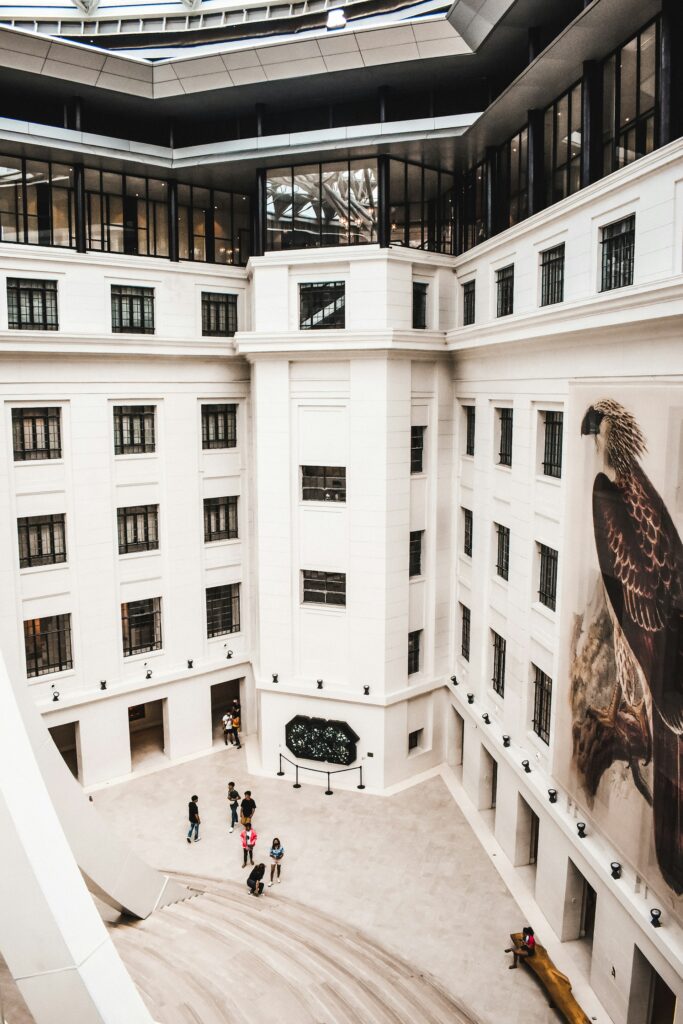

Discover The Hidden Gems Of Binondo
Binondo, Manila’s Chinatown, is the oldest Chinatown in the world and a bustling hub of culture, history, and culinary delights. A visit to Binondo offers a sensory overload of sights, sounds, and flavors that you won’t want to miss. Embark on a food trip and sample a variety of Chinese-Filipino dishes. Must-try spots include the famous Eng Bee Tin for hopia, Sincerity Cafe for their legendary fried chicken, and Dong Bei Dumplings for freshly made dumplings. Beyond the culinary delights, take a historical walk through the streets of Binondo and discover its rich past.
Visit the Binondo Church, also known as the Minor Basilica of St. Lorenzo Ruiz, which dates back to 1596. Stroll along Ongpin Street, the main artery of Chinatown, lined with shops selling everything from traditional Chinese medicine to gold jewelry. Binondo is also a great place for bargain hunting. Explore the various shops and stalls for unique finds, from Chinese herbs and spices to intricate jade jewelry. Don’t forget to haggle for the best prices! By immersing yourself in the vibrant atmosphere of Binondo, you’ll gain a deeper appreciation for Manila’s diverse cultural heritage and vibrant local life.
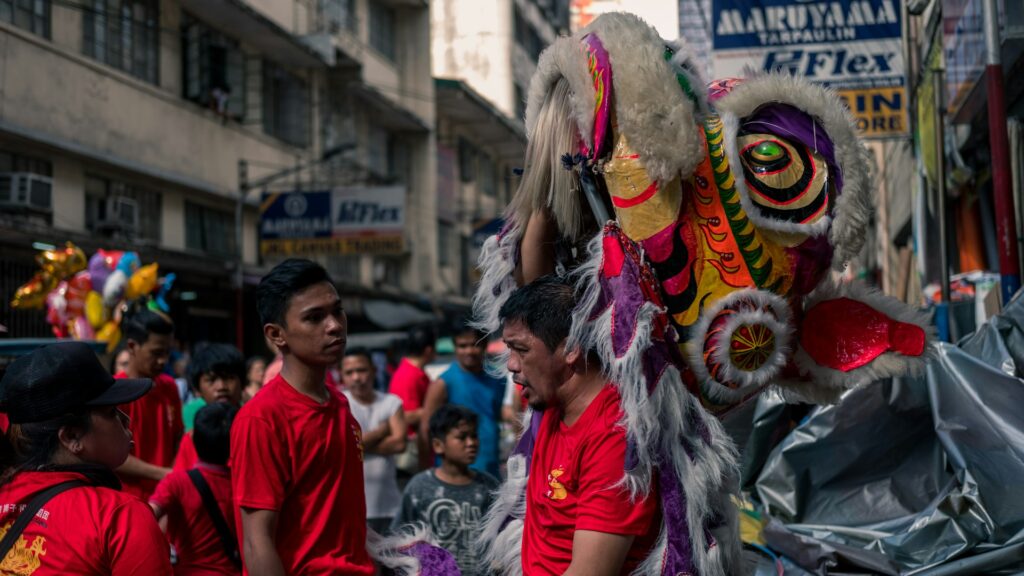
Ride In A Jeepney
Known in the Philippines as the king of the road, Jeepneys are synonymous with filipino culture and as such, no trip would be complete without a ride in one. Sure, they’re cramped with commuters and the fumes that these gas-guzzling vehicles give off are something else, but these vehicles, made from surplus Jeeps left behind by American troops after World War II, are part of Manila’s charm and character and have become a sort of national emblem. Best to pay your respects by spending a little time in one, we think.
Hopping on one is the best way to get a real glimpse of life in Manila and see how the locals live and get around, too. Sadly, the Jeepney will soon be a thing of the past; a push by the government to modernise the transportation system and replace all diesel engine-powered vehicles by the middle of the decade is currently underway, so best hop on board while you still can.
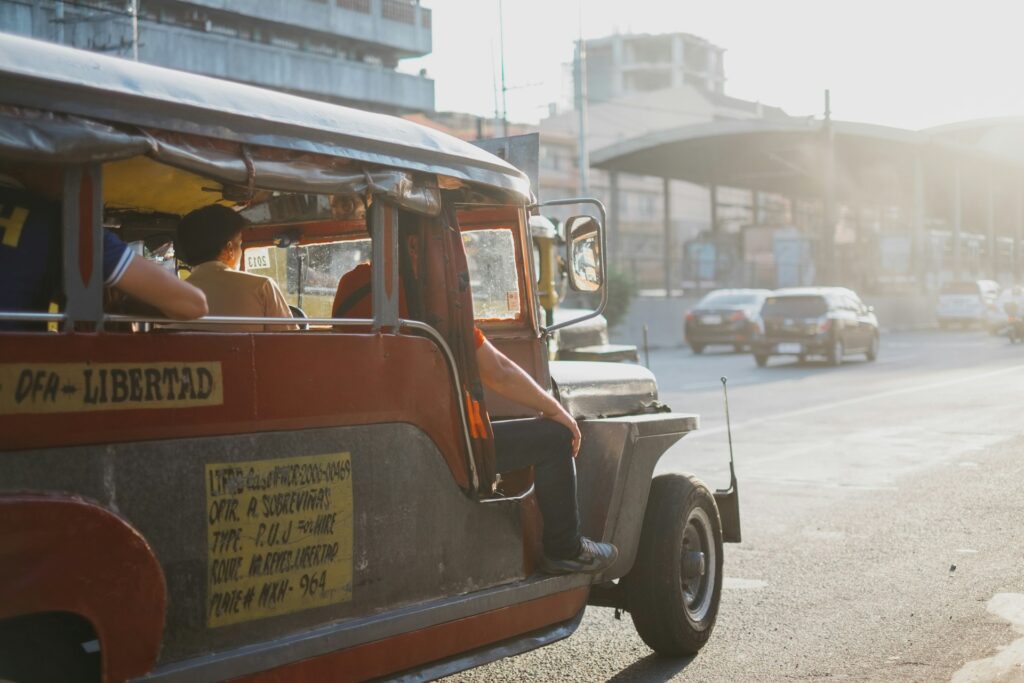
Lechon For Lunch & A Seafood Supper
A staple in every Filipino feast and celebration, you can’t (and shouldn’t) leave Manila without trying a plate of Lechon; undeniably the country’s favourite food. It might also be its most delicious. This slow roasted suckling pig, sometimes soaked in soy and always stuffed with everything from lemongrass and garlic to tamarind, may be the best pig you ever taste. With crisp, crunchy skin and succulent juicy meat, the country has perfected the hog roast, make no mistake. Don’t worry, you don’t have to have a whole hog if you simply want a taste of the dish as in the capital, there are plenty of places serving up single servings to the hungry masses.
After a lunch of lechon, it’s time for a seafood supper, specifically at Seaside Market Dampa. Located at Macapagal Boulevard in Pasay City, it’s a wet market showing off and selling the sea’s finest bounty. You pick what you want to eat from the market, hand it to one of the many restaurants there and tell them how you want it to be cooked. Perfection, we think.
Read: 10 IDEAL foodie destinations in South East Asia
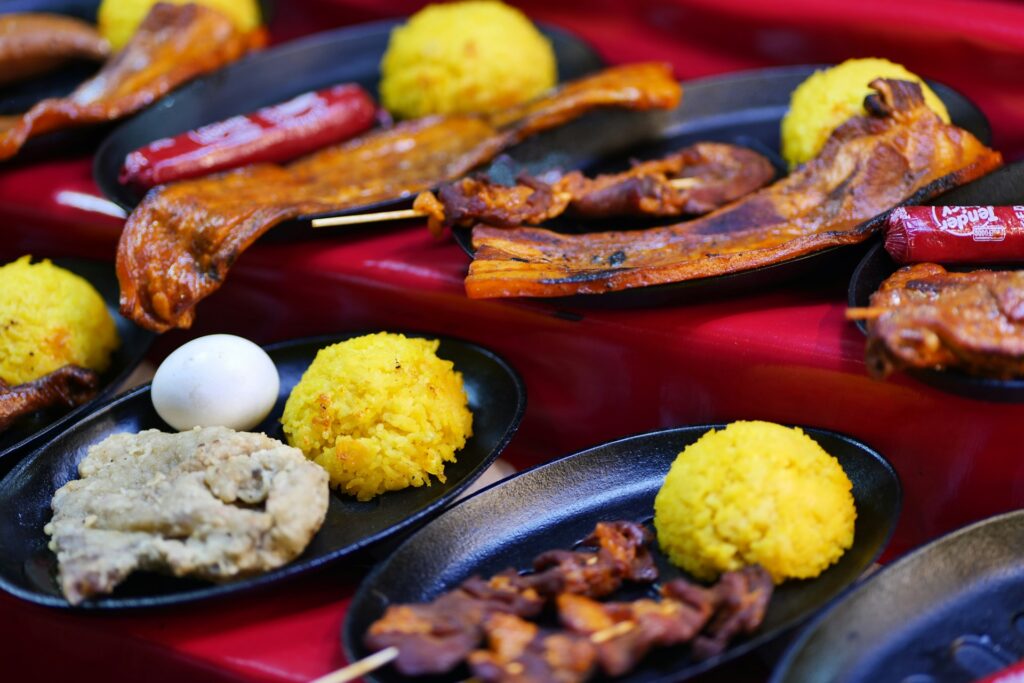
Sing Your Heart Out At Karaoke
It seems that everyone in Manila loves to sing, and annoyingly, everyone seems to be able to do it very well. Indeed, Filipinos love their music, and you’ll find karaoke everywhere. There’s no better way to ingratiate yourselves with the locals than by pulling up a stool, sharing a few lambanogs and showing off your pipes. English is unofficially the first language and both modern and old school pop music from the States and Britain are extremely popular here; no excuse not to know any of the songs or lyrics, then. Just be warned, the Filipinos take their karaoke extremely seriously; be respectful of everyone’s skills or lack thereof, and get stuck in.
Enjoy The Delights Of Manila Bay
A wonderful way to while away an evening in the capital is at Manila Baywalk, a two-kilometre stretch of pedestrian friendly paths lined by palm trees. Here you’ll find runners, live music, buskers and food vendors revelling in the respite of the evening.
The spectacular sunsets in Manila Bay are renowned for being among the best in the world and one of the best spots to experience the sun descending is on Manila Bay’s promenade, right behind the Mall of Asia. This plays home to al fresco dining spots and open air cafes to head to after you watch the sun go down. While you’re in the neck of the woods, a trip to Okada Manila is definitely worth a visit, which brings us to our next point…
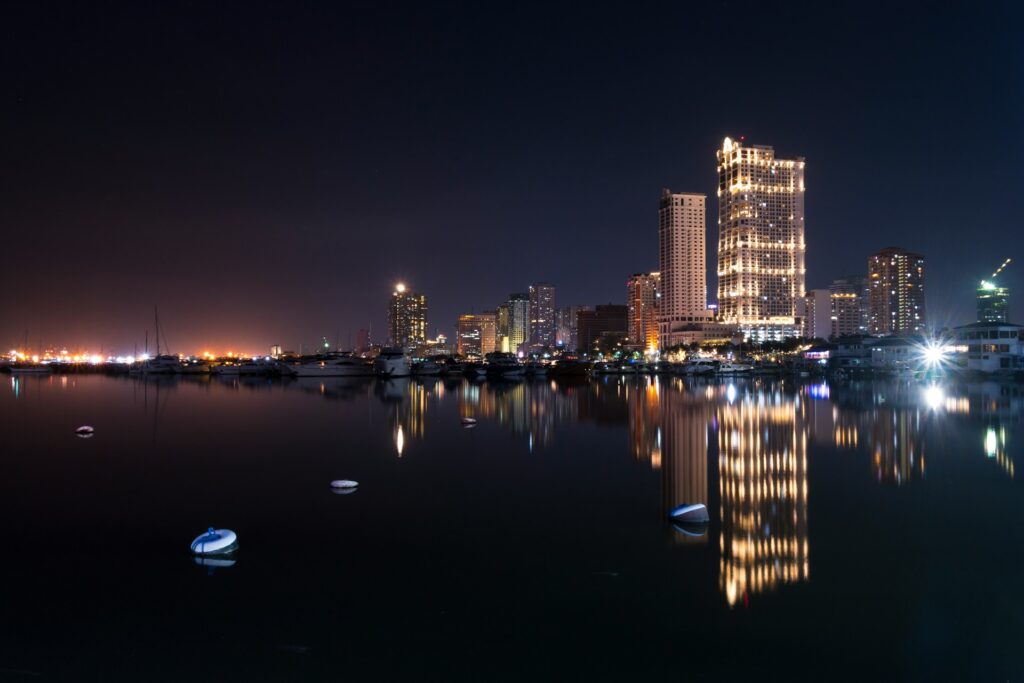
Visit Okada Manila
This mega resort offers luxurious hotels, a majestic large-scale water fountain show, an indoor beach club, prestige nightclubs, shopping malls, and even a golf course. If you’re after a fine dining experience, then this is the place to come as it’s home to a number of high-end restaurants. And if that’s not enough risk to your bank balance, it’s also home to a world-class casino with thousands of mixed slot machines and around 500 action-packed table games.
Manila, it seems, is swiftly becoming one of Asia’s brightest gambling destinations, and if you want to try your luck, then Okada Manila is one of the best places to do it. From classic baccarat to poker, from roulette to craps, from sic bo to pontoon – you name it, they’ve got it. For those particularly interested in baccarat, the casino offers a variety of table variants.
If you come up trumps in a few rounds of roulette and feel like celebrating, be sure to check out the resort’s Cove nightclub; the largest indoor beach club and nightclub in Metro Manila.
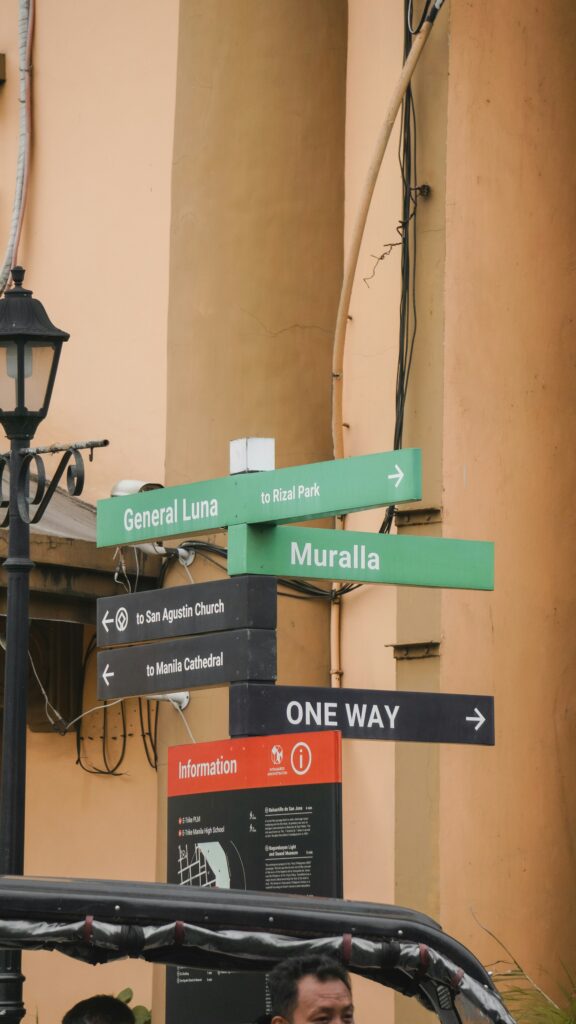
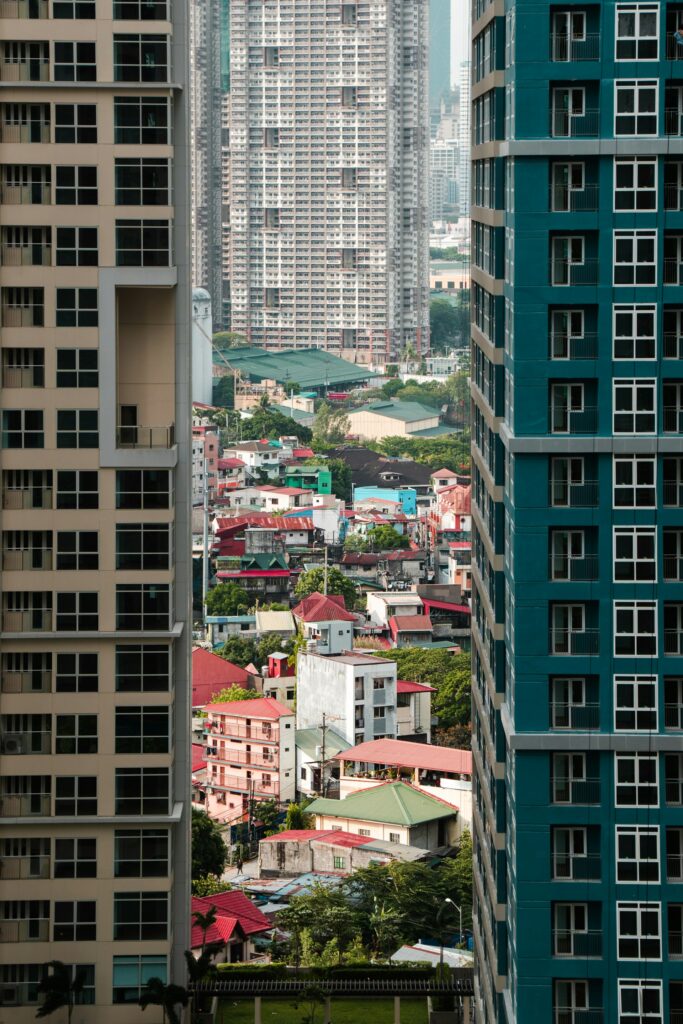
Wander Around The Spanish Old Town
If the relentless glitz and glamour of the casino at Okado Manila has you longing for something historical and more worldly, then wandering around Intramuros, a historic walled area within Manila, is a must. A city within a city, Intramuros is the remnants of Spain’s former colonial empire and is a world away from Manila’s high rises which surround it.
Offering a portal into the Philippines’ colonial past, the best way to see this part of the capital is on foot, where you can wander past old baroque style churches and colonial villas. Horse drawn carriages trot the area’s cobble streets and will take you to Fort Santiago which contains a memorial to Filipino nationalist, doctor, writer, and polymath Jose Rizal.
Visit Quiapo District & Its Market
A short jeepney ride from Intramuros will find you at Quiapo market, the largest market in the Philippines. Located just behind Quiapo church, it’s a place where you can find everything and anything – cheap branded clothing lines of dubious origins and all sorts of collage industry knick-knacks. You name it and someone’s almost certainly selling it.
The streets surrounding the church are famously, or should that be notoriously, known for selling all kinds of herbal remedies and folk medicines to cure many different ailments. And if you want to gaze into your future, fortune tellers scrying, playing a hand at cartomancy and shuffling tarot cards are also prevalent.
We love the city so much, we’ve even included Manila in our roundup of the 5 most liveable cities in Southeast Asia for expats. Do check it out next.





